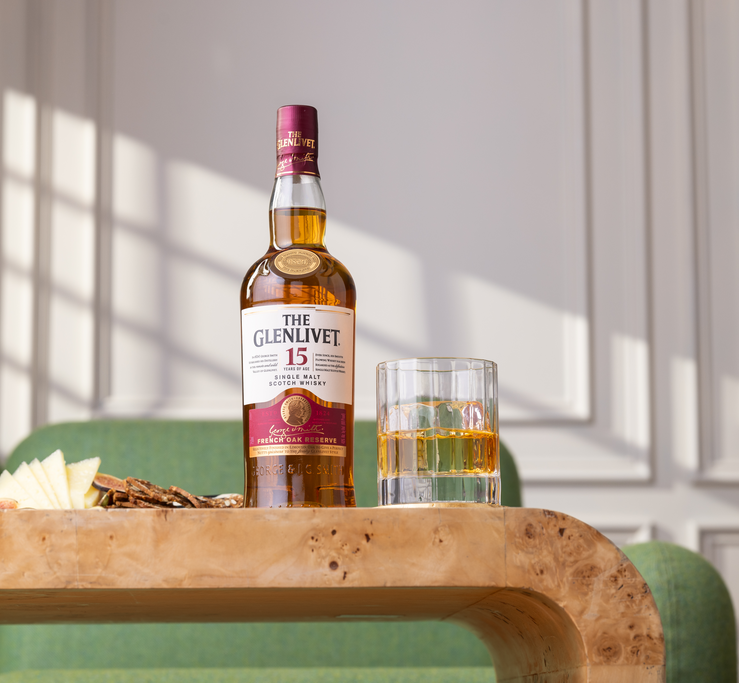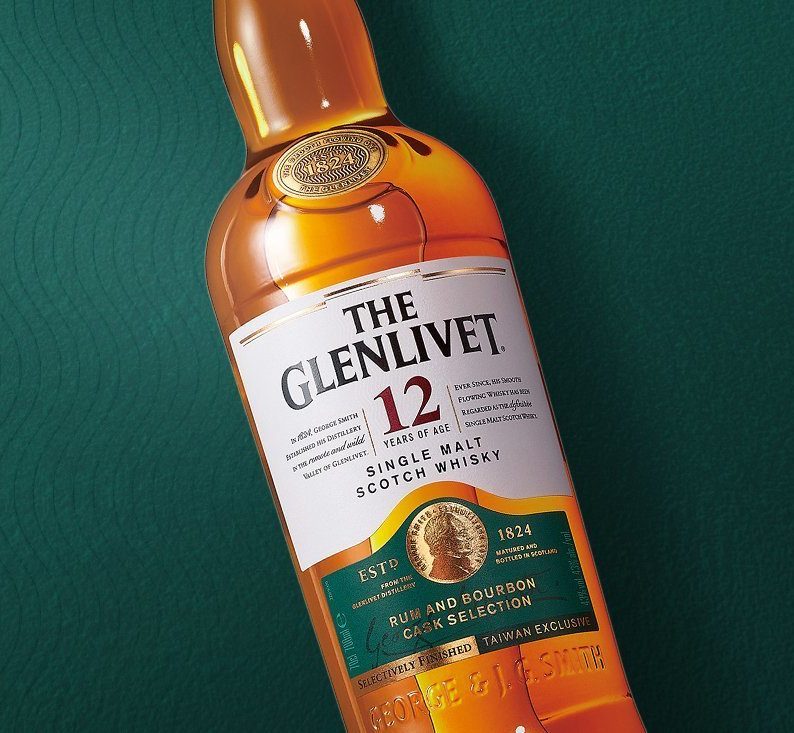
If you glance at the label of any bottle of whisky, you are sure to spot a variety of descriptors that tell you about the type of whisky that’s in the bottle.
There’ll be the brand or distillery name, the alcohol content, and perhaps an age statement or whether it’s cask strength. If it’s a scotch whisky, it may also tell you which of the whisky regions of Scotland it comes from. Take a look at any bottle from The Glenlivet’s Distillery Reserve collection, for instance, and you’ll see that we proudly include that it’s produced in Speyside.
And then there are the whisky types or categories to distinguish between too. Single malt. Double malt. Blended whisky. But what do these terms mean? When it comes to single malt vs double malt, what’s the difference? Well, we’ve written this article to help clear things up so that when you next find yourself seeking a delectable dram, you’ll know exactly what whisky’s what.
What’s the difference between single malt and double malt whisky?
To truly look at the differences in the single malt vs double malt showdown, it’s useful to understand how each type of whisky is produced.
In short, the main differences are:
- A double malt whisky can be produced in two distilleries and is then blended together, whilst a single malt whisky must only be made in one.
- A single malt whisky can only be made with water and barley. However a double malt whisky may include other malts and grains.
- Single malt whiskies must be aged for at least 3 years in oak casks or barrels. Double malt whiskies have no such requirements.
Single Malt
Single malt whisky is made from 100% malted barley at a single distillery. The production involves mashing the barley, fermentation, distillation, and ageing in oak casks for a minimum of three years. The distinctiveness of single malt whisky comes from using only one type of grain and the unique characteristics of the distillery’s equipment and geographical location.
Double Malt
The term “double malt” is not a standard classification in the whisky world. However, double malt is a term used to describe where two single malt whiskies are blended to achieve a specific flavour profile. It falls into the category of blended whisky, combining malts from different distilleries without any grain whisky.
Blended Whisky
As the name suggests, blended whisky is a mix of whiskies from different distilleries. Producers carefully meticulously combine various whiskies to create a consistent flavour. Blended whiskies can be made by combining malt whisky with grain whisky, two or more grain whiskies or two or more single malt whiskies, hence why double malt varieties fall into this category.
So, in summary, a single malt whisky is made at one distillery solely from malted barley whereas double malt is a form of blended whisky made by combining single malt whiskies from different distilleries.
How do single malt and double malt whisky differ in taste?
The flavour of a whisky is determined by a broad variety of factors. As single malt whisky is made from 100% malted barley at a single distillery, it showcases the specific qualities of that distillery’s production process, water source, and geographic location. Single malts often have distinct and individual yet full-bodied flavours, influenced by factors like the type of stills used, fermentation time, and the cask in which they are aged. In essence, the taste of a single malt reflects the singular identity of the producing distillery.
Scottish whisky, i.e. scotch, for instance, captures the spirit of the country in every bottle. But there are still vast differences in the taste of scotch depending on which region they were produced in. Single malt scotch from Islay tends to have a strong, peaty flavour due to the island’s terrain whereas Campbeltown whiskies are full-bodied and often have a slightly salty finish from the sea air leaving its mark on the casks.
With a double malt, the taste would depend on the specific malts chosen and the proportions used in the blend. Each malt whisky contributes its unique flavour profile, and the resulting blend aims to harmonise these characteristics.
Blended whiskies that combine malt and grain varieties offer a different drinking experience yet again. Blended whiskies are diverse and can exhibit a wide range of flavours, largely depending on the specific whiskies used in the blend. Malt whiskies contribute complexity, while grain whiskies add smoothness. Overall, blended whiskies are usually lighter and more subtle.
Is single malt more expensive than double malt whisky?
In general, single malt whiskies tend to be more expensive than blended whiskies. Single malts are produced at a single distillery using 100% malted barley, and as already mentioned, they often carry unique characteristics associated with that distillery’s production methods and location. The production of single malt whisky is typically smaller in scale and uses higher quality grain, with the resulting whisky being limited in supply.
Blended whiskies including double malt varieties, on the other hand, combine whiskies from different distilleries. They may use lower-quality grain and incorporate younger and less expensive whiskies.
How to drink single malt vs double malt whisky
When it comes to how to drink whisky, be it single malt, double malt or blended, it’s really a matter of personal preference and finding the way you enjoy it most. However, here are some general guidelines for getting the most from your dram:
Glassware
Using the right types of whisky glasses can make a difference. A tulip-shaped glass, like a Glencairn glass, will help concentrate the aromas and enhance the tasting experience of a single malt. Blended whiskies are often more forgiving when it comes to glassware choice.
Neat or with water
Many enthusiasts prefer to enjoy single malt neat to savour its flavour. However, adding a few drops of water can sometimes unlock new characteristics, especially in higher-proof whiskies. The same can be said for blended whisky. Serving your whisky on ice or with a splash of H2O can provide a different experience and an even more mellow taste.
Sip, don’t shoot
If drinking your single malt neat, take small sips and allow the whisky to coat your palate. This allows you to appreciate the complexity and nuances of the single malt.
Temperature matters
Serving single malt at room temperature or slightly below allows the flavours to develop. Avoid serving it too cold, as it can mute the aromas and flavours.
Consider pairings
Single malts, double malts and blended whiskies can all be enjoyed with a variety of foods. Whisky chocolate pairing is a common practice, and the spirit is also complemented by cheeses and dried fruits.
Make a cocktail
Due to their balanced and consistent profiles, blended whiskies make excellent bases for cocktails like highball drinks, or sour cocktails. But don’t overlook single malts for creating tasty serves. Classic cocktails such as an Old Fashioned or simple scotch and soda offer something different while still letting the character of the whisky shine through.
So, single malt vs double malt: which whisky is better?
The answer to this question comes down to your own individual taste. Both types have their merits and while some appreciate the distinctiveness of single malt whiskies others like how double malts can harmonise offerings from different distilleries.
If you want to explore the diversity of single malt whiskies, The Glenlivet has plenty of expressions to choose from. Our Founder’s Reserve smooth scotch whisky, for example, is a tribute to the man who started it all, George Smith and exhibits classic flavours against a creamy, smooth texture. And we also have a range of aged whiskies, including our 25-year-old single malt.
To learn more about the wonderful complexities of whisky, check out our whisky guide and selection of whisky facts. Be sure to also browse our whisky cocktails for inspiration for your next pour.


